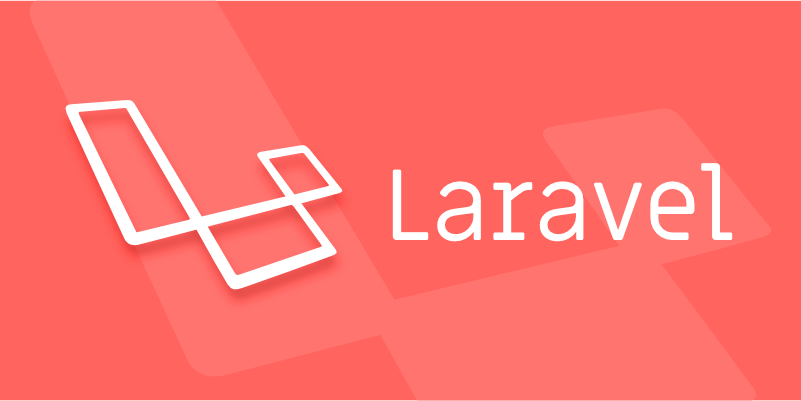Blade is Laravel's template engine, built with simplified views with neat labels. Its core functions include: 1. Layout inheritance, and the content replacement of the main template and subpage is achieved through @extends and @section to reduce duplicate code; 2. Control structures, such as @if and @foreach directives for conditional judgment and loop rendering, it is recommended to avoid excessive nesting to keep the logic clear; 3. Component and slot mechanisms, support the creation of reusable UI elements, call components through @component or abbreviated

Blade is a template engine built into Laravel. It does not rely on native PHP syntax, but provides a set of concise and easy-to-read labels to build views. Although it is powerful, you may feel a little uncomfortable when you first get started. Here are some practical suggestions and common uses for using Blade to help you write Laravel views more efficiently.

Infrastructure and layout inheritance
A core feature of Blade is Layout Inheritance, which allows you to define a main template and then replace specific parts in the subpage.

Recommended practices:
- Create a
layouts/app.blade.phpfile as the main template. - In the subpage, inherit this layout through
@extends('layouts.app'). - Use
@section('content')...@endsectionto fill in the content area in the main template.
For example:

<!-- layouts/app.blade.php -->
<html>
<head><title>@yield('title', 'default title')</title></head>
<body>
@yield('content')
</body>
</html> <!-- pages/home.blade.php -->
@extends('layouts.app')
@section('title', 'Home')
@section('content')
<h1>Welcome to homepage</h1>
@endsectionThis avoids duplicate code while keeping the page structure clear.
Control structure: conditional judgment and loop
Blade provides a PHP-like control structure, but appears in the form of instructions, such as @if , @else , @foreach , etc.
Common usage:
Determine whether the user is logged in:
@if(auth()->check()) <p>Welcome back, {{ auth()->user()->name }}</p> @else <p>Please log in first. </p> @endifTraversing the data list:
<ul> @foreach($users as $user) <li>{{ $user->name }}</li> @endforeach </ul>
Note: Do not over-nest these control structures, keep the logic simple, clear and easier to maintain.
Components & Slots
Laravel has introduced a component system since version 7, which is very suitable for building reusable UI elements such as buttons, cards, etc.
Basic usage:
Create component classes and views:
php artisan make:component Alert
This generates an
Alertclass and a corresponding Blade file.Define component content:
<!-- components/alert.blade.php --> <div class="alert alert-{{ $type }}"> {{ $slot }} </div>Use in other views:
@component('components.alert', ['type' => 'success']) Operation was successful! @endcomponent
Or use the abbreviation:
<x-alert type="danger">An error occurred! </x-alert>
This method makes front-end code more modular and easier to test and maintain.
Data binding and escape
Blade will perform HTML escapes variables by default to prevent XSS attacks. If you are sure that the output is safe, you can use {!! !!} to bypass escape.
{{ $userInput }} <!-- Escape Output-->
{!! $trustedHtml !!} <!-- Not escaped output -->This is very important, especially when displaying content input by users, be sure to ensure security.
In addition, Blade supports using PHP expressions directly in the view, but try to use <?php ... ?> as little as possible to keep the template neat.
Basically that's it. Blade looks simple, but flexible use in actual projects can greatly improve development efficiency. Once you master the features such as layout inheritance and component design, writing views will become very easy.
The above is the detailed content of Working with Blade Templating Engine in Laravel Views?. For more information, please follow other related articles on the PHP Chinese website!

Hot AI Tools

Undress AI Tool
Undress images for free

Undresser.AI Undress
AI-powered app for creating realistic nude photos

AI Clothes Remover
Online AI tool for removing clothes from photos.

Clothoff.io
AI clothes remover

Video Face Swap
Swap faces in any video effortlessly with our completely free AI face swap tool!

Hot Article

Hot Tools

Notepad++7.3.1
Easy-to-use and free code editor

SublimeText3 Chinese version
Chinese version, very easy to use

Zend Studio 13.0.1
Powerful PHP integrated development environment

Dreamweaver CS6
Visual web development tools

SublimeText3 Mac version
God-level code editing software (SublimeText3)
 Working with pivot tables in Laravel Many-to-Many relationships
Jul 07, 2025 am 01:06 AM
Working with pivot tables in Laravel Many-to-Many relationships
Jul 07, 2025 am 01:06 AM
ToworkeffectivelywithpivottablesinLaravel,firstaccesspivotdatausingwithPivot()orwithTimestamps(),thenupdateentrieswithupdateExistingPivot(),managerelationshipsviadetach()andsync(),andusecustompivotmodelswhenneeded.1.UsewithPivot()toincludespecificcol
 Sending different types of notifications with Laravel
Jul 06, 2025 am 12:52 AM
Sending different types of notifications with Laravel
Jul 06, 2025 am 12:52 AM
Laravelprovidesacleanandflexiblewaytosendnotificationsviamultiplechannelslikeemail,SMS,in-appalerts,andpushnotifications.Youdefinenotificationchannelsinthevia()methodofanotificationclass,andimplementspecificmethodsliketoMail(),toDatabase(),ortoVonage
 Strategies for optimizing Laravel application performance
Jul 09, 2025 am 03:00 AM
Strategies for optimizing Laravel application performance
Jul 09, 2025 am 03:00 AM
Laravel performance optimization can improve application efficiency through four core directions. 1. Use the cache mechanism to reduce duplicate queries, store infrequently changing data through Cache::remember() and other methods to reduce database access frequency; 2. Optimize database from the model to query statements, avoid N 1 queries, specifying field queries, adding indexes, paging processing and reading and writing separation, and reduce bottlenecks; 3. Use time-consuming operations such as email sending and file exporting to queue asynchronous processing, use Supervisor to manage workers and set up retry mechanisms; 4. Use middleware and service providers reasonably to avoid complex logic and unnecessary initialization code, and delay loading of services to improve startup efficiency.
 Managing database state for testing in Laravel
Jul 13, 2025 am 03:08 AM
Managing database state for testing in Laravel
Jul 13, 2025 am 03:08 AM
Methods to manage database state in Laravel tests include using RefreshDatabase, selective seeding of data, careful use of transactions, and manual cleaning if necessary. 1. Use RefreshDatabasetrait to automatically migrate the database structure to ensure that each test is based on a clean database; 2. Use specific seeds to fill the necessary data and generate dynamic data in combination with the model factory; 3. Use DatabaseTransactionstrait to roll back the test changes, but pay attention to its limitations; 4. Manually truncate the table or reseed the database when it cannot be automatically cleaned. These methods are flexibly selected according to the type of test and environment to ensure the reliability and efficiency of the test.
 Choosing between Laravel Sanctum and Passport for API authentication
Jul 14, 2025 am 02:35 AM
Choosing between Laravel Sanctum and Passport for API authentication
Jul 14, 2025 am 02:35 AM
LaravelSanctum is suitable for simple, lightweight API certifications such as SPA or mobile applications, while Passport is suitable for scenarios where full OAuth2 functionality is required. 1. Sanctum provides token-based authentication, suitable for first-party clients; 2. Passport supports complex processes such as authorization codes and client credentials, suitable for third-party developers to access; 3. Sanctum installation and configuration are simpler and maintenance costs are low; 4. Passport functions are comprehensive but configuration is complex, suitable for platforms that require fine permission control. When selecting, you should determine whether the OAuth2 feature is required based on the project requirements.
 Implementing Database Transactions in Laravel?
Jul 08, 2025 am 01:02 AM
Implementing Database Transactions in Laravel?
Jul 08, 2025 am 01:02 AM
Laravel simplifies database transaction processing with built-in support. 1. Use the DB::transaction() method to automatically commit or rollback operations to ensure data integrity; 2. Support nested transactions and implement them through savepoints, but it is usually recommended to use a single transaction wrapper to avoid complexity; 3. Provide manual control methods such as beginTransaction(), commit() and rollBack(), suitable for scenarios that require more flexible processing; 4. Best practices include keeping transactions short, only using them when necessary, testing failures, and recording rollback information. Rationally choosing transaction management methods can help improve application reliability and performance.
 Handling HTTP Requests and Responses in Laravel.
Jul 16, 2025 am 03:21 AM
Handling HTTP Requests and Responses in Laravel.
Jul 16, 2025 am 03:21 AM
The core of handling HTTP requests and responses in Laravel is to master the acquisition of request data, response return and file upload. 1. When receiving request data, you can inject the Request instance through type prompts and use input() or magic methods to obtain fields, and combine validate() or form request classes for verification; 2. Return response supports strings, views, JSON, responses with status codes and headers and redirect operations; 3. When processing file uploads, you need to use the file() method and store() to store files. Before uploading, you should verify the file type and size, and the storage path can be saved to the database.
 Generating URLs for Named Routes in Laravel.
Jul 16, 2025 am 02:50 AM
Generating URLs for Named Routes in Laravel.
Jul 16, 2025 am 02:50 AM
The most common way to generate a named route in Laravel is to use the route() helper function, which automatically matches the path based on the route name and handles parameter binding. 1. Pass the route name and parameters in the controller or view, such as route('user.profile',['id'=>1]); 2. When multiple parameters, you only need to pass the array, and the order does not affect the matching, such as route('user.post.show',['id'=>1,'postId'=>10]); 3. Links can be directly embedded in the Blade template, such as viewing information; 4. When optional parameters are not provided, they are not displayed, such as route('user.post',






